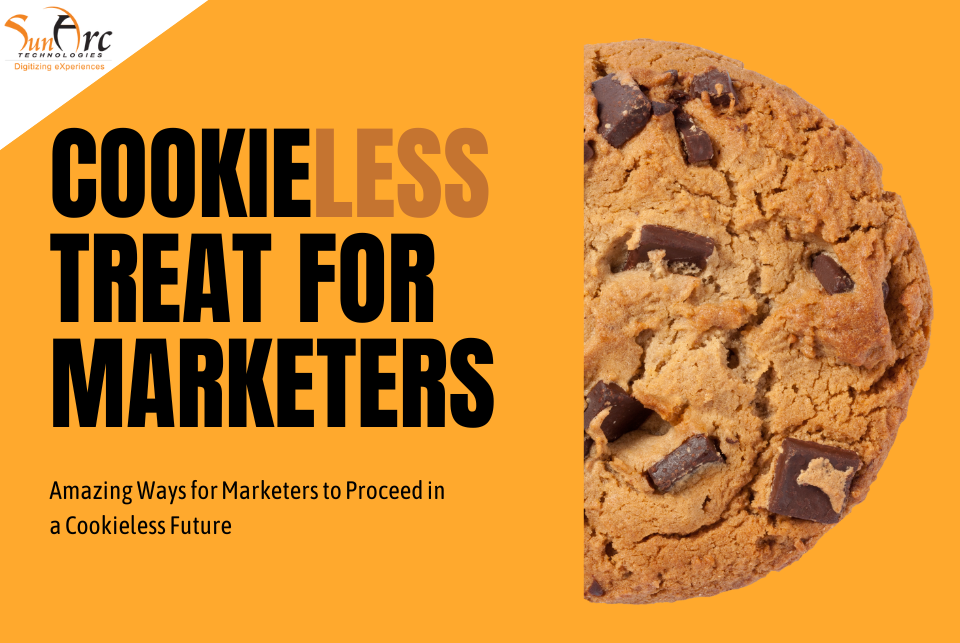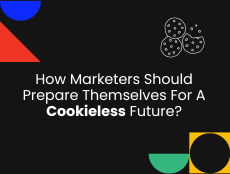Google is rolling out a plan to eliminate those third-party cookies in Chrome that have been causing delays and tweaks for years. The ball officially started rolling on January 4th, as the tech giant kicked off a test of Tracking Protection. This nifty feature puts the brakes on cross-site tracking by placing a default restriction on third-party cookies’ access to websites. Overall, the cookieless future is here.
Tech giants like Apple made a move with the iOS 14 update, putting user privacy front and center. Following this lead, Google hopped on the privacy train, revealing its own game plan to bid farewell to third-party cookies on Google Chrome.
Here is the timeline of third-party cookie changes.

(Source: Martech)
But don’t worry too much – at first, only about 1% of Chrome users worldwide will feel the impact. This allows everyone in the online game to check if they’re ready for a web that’s not relying on third-party cookies.
This move is part of Google’s Privacy Sandbox initiative, making online privacy a top priority. But how can marketers and advertisers proceed in this cookieless world?
Let’s check it out..!!

The Impact of the Cookieless Future on the Marketing and Advertising Industry
The impact of a world without cookies is significant for both marketers and advertisers. In the past, third-party cookies have played a crucial role in enabling targeted advertising and delivering personalized content. As browsers continue to block these cookies and privacy regulations gain momentum, the foundation of many marketing strategies is at risk.
Potential Challenges in a Cookieless Landscape.
1. Limited User Tracking
Marketers may face challenges in tracking user behaviour across the web, impacting the accuracy of audience segmentation and personalized targeting.
2. Attribution Modeling Complexity
Attribution models (Last-Click, First-Click, Linear, Time Decay, Position-Based, and Data-Driven) that rely heavily on cookies may become less reliable, making it challenging to accurately measure the effectiveness of marketing channels.
3. Adaptive Learning Curve
As the industry evolves, marketers face the challenge of adjusting to new tools and methodologies to make data-driven decisions.
How can Marketers Proceed in a Cookieless Future?
Here are the best ways in which marketers can perform better in the cookieless future:
1. Leveraging First-Party Data
With the decline in the reliability of third-party cookies, it becomes increasingly important to rely on information obtained directly from users (first-party data). The data contains valuable insights gathered from user interactions with your website, app, or customer service.
Here’s how you can implement it:
- Effective Communication
It is important to provide a clear explanation to your audience regarding the purpose of collecting specific data and how it can benefit them. Being open and honest stimulates a sense of trust.
Example: If you run an online store, inform users that collecting their purchase history allows for personalized recommendations and a smoother shopping experience.
- Offer Incentives
Encourage users to share data by providing perks like exclusive content, personalized experiences, or discounts.
Example: Offer a discount on the user’s next purchase in exchange for signing up and sharing preferences, creating a win-win situation.
- Gain Insight into Your Audience
Analyze your user data by dividing it into segments to gain a deeper understanding of their behaviours, preferences, and engagement patterns.
Example: If you’re an online content creator, segment your audience based on content consumption patterns, tailoring future content to specific interests.
2. Contextual Targeting
As tracking individuals becomes increasingly difficult, contextual targeting ensures that your ads are relevant to the content of the webpage. By avoiding the use of individual user data, your marketing remains relevant and effective.
Here’s how you can implement it:
- Understand Content
Gain a comprehensive understanding of the content to ensure that your ads are placed in the appropriate context. This assists in creating advertisements that are relevant and attractive.
Example: If you’re advertising a new tech gadget, ensure your ad appears on tech review sites or articles, reaching users already interested in such products.
- Use Relevant Keywords
Make sure your ads are triggered by keywords that are relevant to the content so they align with your brand and message.
Example: If you’re a travel agency, use keywords like “adventure,” “exploration,” or “travel tips” to ensure your ads appear in relevant content.
3. Adopting Privacy-Focused Technologies
With the help of federated learning and on-device processing, marketers can now extract valuable insights while ensuring the utmost protection of user privacy.
Here’s how you can implement it:
- Stay updated
Stay up-to-date with privacy-centric technologies and integrate them into your marketing tools.
Example: Explore machine learning models that process data on users’ devices, reducing the need to send sensitive information over the internet.
- On-Device Processing
Use solutions that allow data processing to occur on the user’s device, minimizing the need for extensive data transfers.
Example: Implement analytics tools that process user interactions locally, ensuring personal data remains on the user’s device and enhancing data security.
4. Building Strong Relationships with Platforms
By working with platforms that are actively developing cookieless solutions, marketers can stay ahead of the curve and play a role in shaping the future of digital advertising.
Here’s how you can implement it:
- Engage in Conversations
Participate in industry discussions and work with platforms leading in cookieless solutions.
Example: Consider attending webinars hosted by tech giants where they discuss the latest advancements in cookieless advertising. It’s a great opportunity to actively engage with platform developers and stay up to date with the industry.
- Advocate for Privacy
Support user privacy and responsible data practices in the industry in order to promote a more ethical digital ecosystem.
Example: Share articles and insights on your company’s social media platforms, demonstrating your dedication to protecting user privacy and promoting industry-wide best practices.
5. Investing in Customer Education and Trust
Educating customers about the significance of data privacy and ensuring that their information is managed responsibly promotes trust and loyalty.
Here’s how you can implement it:
- Clear Communication
Ensure that your data practices are clearly communicated, with a focus on highlighting the measures taken to protect user privacy.
Example: Publish blog posts or infographics on your website explaining how your company prioritizes user privacy, detailing security measures in place.
- Educational Content
Create content that educates users about the value of their data and how it enhances their overall experience.
Example: Create video tutorials or blog articles that showcase how user data is used to improve services, emphasizing the benefits users receive from sharing information.
Conclusion
When marketers combine these strategies to survive in a cookieless world, they are not only able to negotiate the challenges of marketing in a cookieless world, but they are also able to position themselves to succeed in an environment that places a priority on the privacy of users. It is a trend toward behaviours that are more ethical and user-friendly, and those who utilize it have the opportunity to develop deeper and more sustainable relationships with their audience.
For more marketing strategies to thrive in the digital world, contact us.

